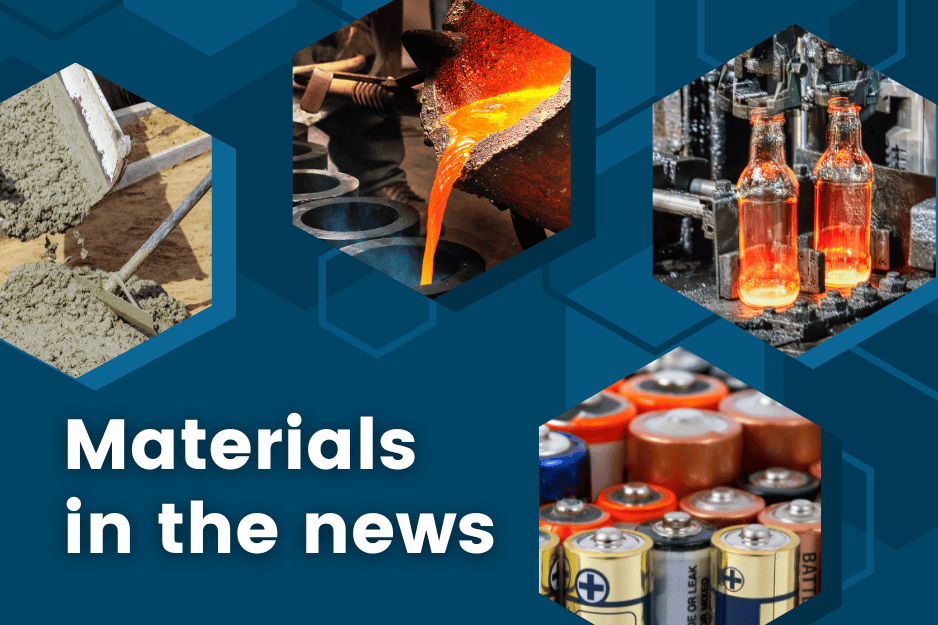
[Image above] Credit: ACerS
NANOMATERIALS
MXene-coated lenses for safer and smarter wearables
Researchers at Waseda University developed stable MXene-coated lenses that shield the eyes against electromagnetic radiation while maintaining hydration and high optical clarity. The MXene films were coated onto commercial soft contact lenses through a wet transfer approach using acetone.
ENERGY
How temperature fuels energy loss in fuel cells
Lawrence Livermore National Laboratory researchers revealed how high operating temperatures could increase electrical leakage in barium zirconate, a widely studied fuel cell material.
New perovskite design sets solar cells on path to stability
Cornell University researchers showed that a 2D perovskite can be layered on top of a 3D perovskite to act as a rugged, weather-resistant coating. The breakthrough came from lattice matching, i.e., the idea that if the lattice of 2D perovskite is sized just right, it will “click” together with the 3D perovskite.
International research team builds world’s most efficient organic solar cell
Kanazawa University researchers collaborated with researchers from REIKO Co., Ltd. and Queen’s University at Kingston to create a high-efficiency, all-organic solar cell using a new electrode and lamination technique. The cell achieved 8.7% power conversion, more than double past models.
Improvements in reactor performance using a smaller, less complex machine
Fusion energy company TAE Technologies invented a streamlined approach to form and optimize plasma in fusion reactors that increases efficiency while significantly reducing complexity and cost.
ENVIRONMENT
Clay-based nanomaterials offer solution to capture carbon dioxide
Researchers at Purdue University, in collaboration with experts from Sandia National Laboratories, found that certain types of the clay group smectite, which is one of the most common naturally occurring nanomaterials on the planet, have hydrophobic surfaces and can sorb significant levels of hydrophobic contaminants.
MANUFACTURING
Common low-grade clay strengthens low-carbon concrete
RMIT University researchers demonstrated cheaper and more abundant illite clay can be mixed with low-grade kaolinite clay to make stronger concrete. Low-grade illite clay does not normally bind well with cement and water, but the co-calcination process with kaolinite greatly enhances illite clay’s binding ability.
Turning water treatment sludge into sustainable concrete
University of South Australia researchers evaluated the microbiologically influenced corrosion resistance of concrete incorporating alum-based water treatment sludge and ground granulated blast-furnace slag. The samples containing 20–40 wt.% sludge retained more than 50% higher compressive strength.
OTHER STORIES
Researchers successfully control the direction of current in a superconductor
Researchers at The University of Osaka found a way to control the direction of current in the superconductor iron selenide telluride. These results could pave the way for ultralow-energy electronics built from superconductors.
Physicists observe a new form of magnetism for the first time
Massachusetts Institute of Technology researchers demonstrated a new form of magnetism that is a mash-up of ferromagnetism and antiferromagnetism. In this so-called p-wave magnetism, the spins form spiral-like configurations within the material that are mirror-images of each other.
Modeling electric response of materials, a million atoms at a time
Researchers in the Harvard John A. Paulson School of Engineering and Applied Sciences developed a machine learning framework that can predict with quantum-level accuracy how materials respond to electric fields, up to the scale of a million atoms. The new framework, called Allegro-pol, builds on a previously developed neural network architecture.
Author
Lisa McDonald
CTT Categories
- Weekly Column: “Other materials”
Related Posts
Other materials stories that may be of interest for November 12, 2025
November 12, 2025
Other materials stories that may be of interest for November 5, 2025
November 5, 2025
Other materials stories that may be of interest for October 29, 2025
October 29, 2025